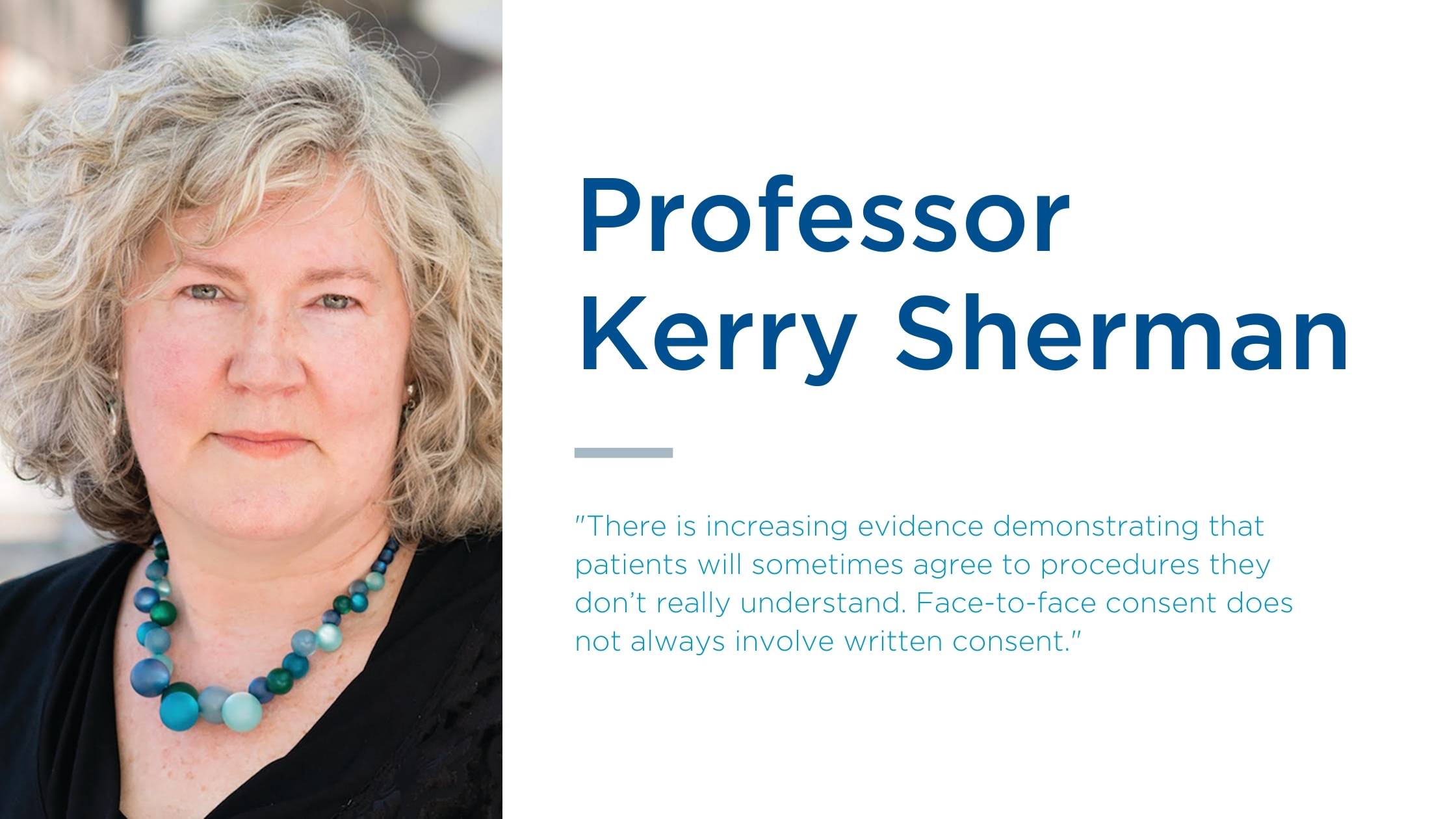Obtaining clear informed consent from patients is a cornerstone of performing any major medical procedure or surgery, yet there is a lack of standardisation of consent procedures in Australia.
That lack of standardisation contributes to problems with obtaining patient consent, according to Professor Kerry Sherman, Health Psychologist in the Centre for Emotional Health and Department of Psychology at Macquarie University.
Professor Sherman is a behavioural medicine researcher who has done extensive work researching decision-making in the medical context, and how people perceive health risks. Professor Sherman and her team have conducted a systematic review of the three exisiting measures of patient consent:
- Information provision
- Comprehension of information by patients
- Voluntariness of decision-making without coercion
“Informed consent reflects all of these aspects, and so should the measurement of consent. We found that the exisiting measures were mostly inadequate. None assessed all three domains of consent, with little evidence for validity of these measures,” said Professor Sherman.
“There was also little consideration given to whether patients found these measures acceptable to use. We need to look at developing a new approach to measuring informed consent. One that reflects a psychometrically sound, valid and reliable measure that taps into all three domains of consent. It is also important that it is easy for patients to use and is relevant for both patients and doctors,” Professor Sherman added.
Patients do not always understand the risk of procedures
Even with the best intentions of doctors and anaesthetists, patients don’t always understand medical terminology or the risks of their procedures.
“From a legal point of view, patients have ticked the box and agreed, but they are not actually comprehending the implications of what they have agreed to. They also may not have been given the adequate time to think about whether that was the right decision,” said Professor Sherman.
Research tells us that patients can have very different levels of understanding of risk, and varied perceptions of what that risk means, Professor Sherman said. For example, one patient may be very concerned about a 5% risk of complication, while another might not be concerned until there is at least a 30% risk. Legally, while patients must give consent before any medical procedure, Professor Sherman explains that there are a whole lot of holes and inconsistencies in the informed consent process.
“There is increasing evidence demonstrating that patients will sometimes agree to procedures they don’t really understand. Face-to-face consent does not always involve written consent. In cases of minor procedures, consent can be implied. For example, a patient holding out an arm to receive a vaccination,” said Professor Sherman.
Informal or implied consent, however, is not sufficient for significant procedures such as operations requiring general, spinal, epidural or any invasive procedure where there are known risks or complications.
Stress can hinder a patient’s decision to consent
A patient’s ability to give informed consent can also be affected by anxiety experienced before medical procedures or surgery. The anxiety triggered by the need to undergo surgery can greatly affect their ability to understand complex information and make decisions.
Consent obtained just before surgery is problematic, as anxiety about the procedure may combine with the pressure to make a decision, which further impairs the patient’s decision-making abilities. Even when written informed consent is obtained, patients may agree to the procedure with little understanding of what they are agreeing to.
“Pre-surgery, most patients are experiencing heightened anxiety and are out of their comfort zone, so there is more likelihood that decisions will be made in haste,” said Professor Sherman.
Professor Sherman believes that patients must:
- Receive adequate information about the procedure
- Know the appropriate levels of detail
- Receive clear outlines of the risk
- Comprehend the information provided
“There also needs to be adequate time for the patient to process the information and make a decision, without feeling any pressure from their doctor. All of which should be measured with valid and reliable instruments. The decision-making must reflect the patient’s values and preferences, and not just those of the clinician,” said Professor Sherman.
Want to make informed patient consent easy?
MedConsent is an interactive online consent tool that enables clinicians to use a consistent informed consent process for each procedure that ‘s aligned with best practice. It’s easy to use and accessible, making it the ideal consent solution.
Ready to learn more?
- See how it works
- Book a demo or talk to us about using MedConsent in your practice
- Participate in a user pilot in your practice area

